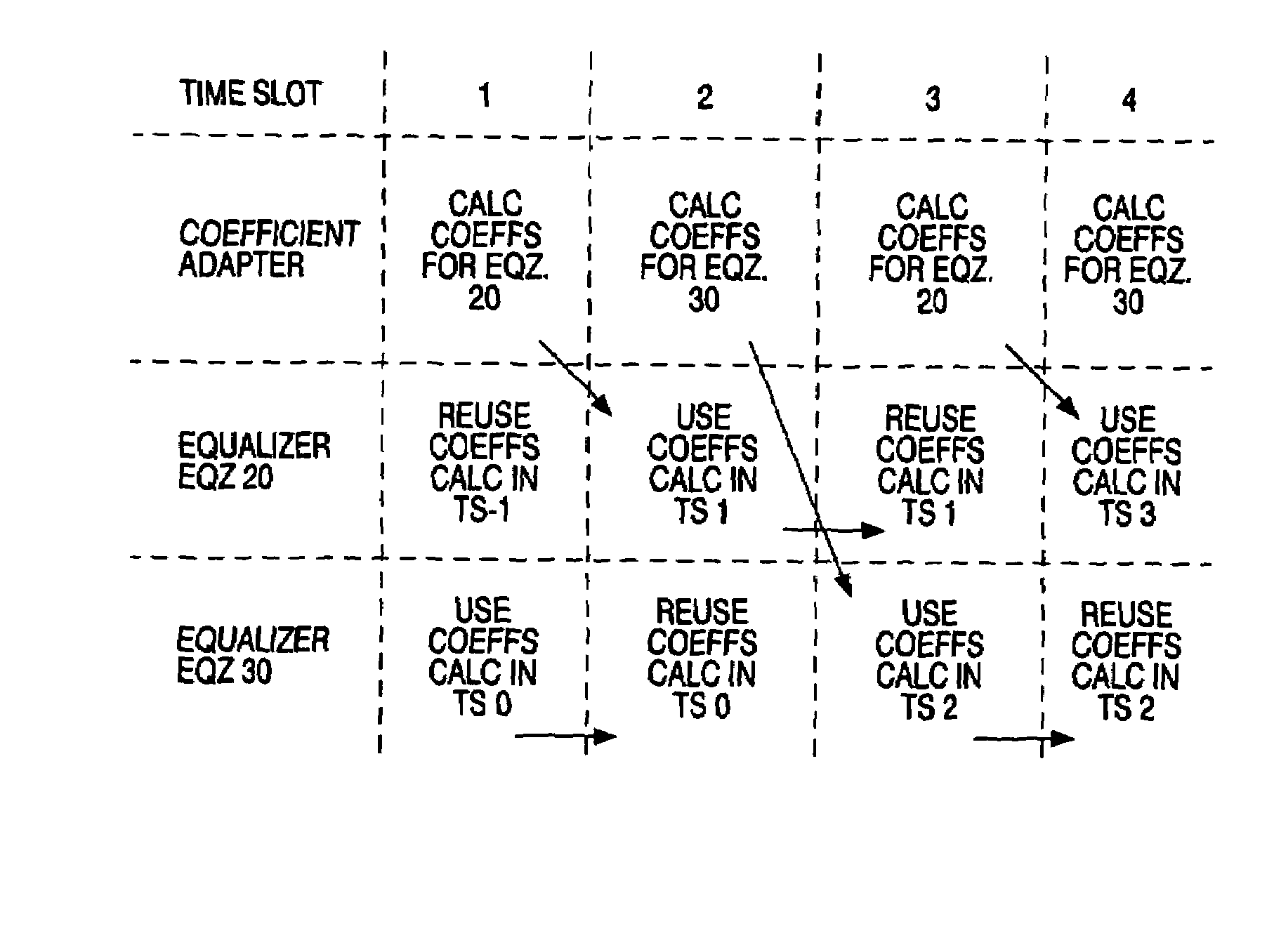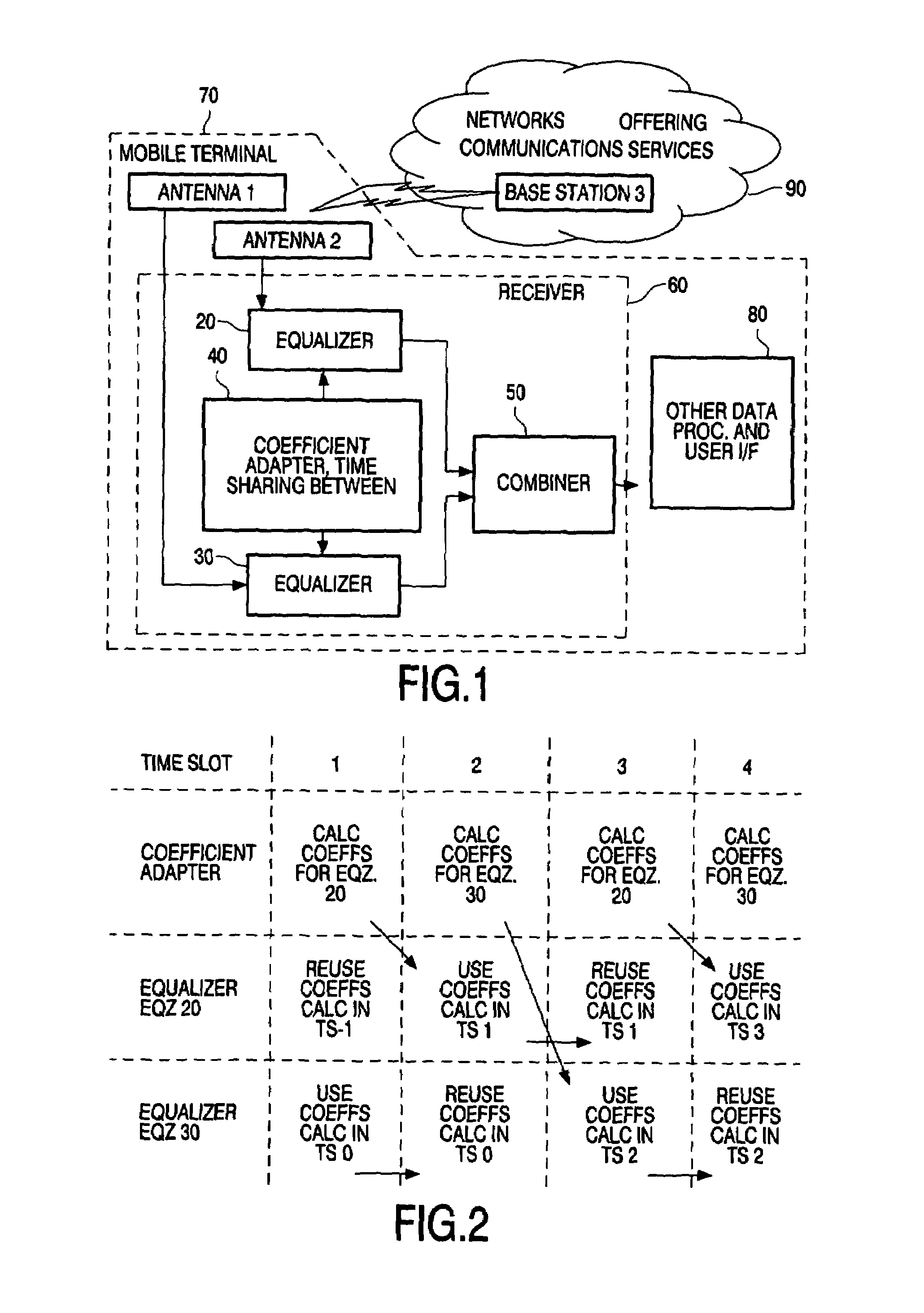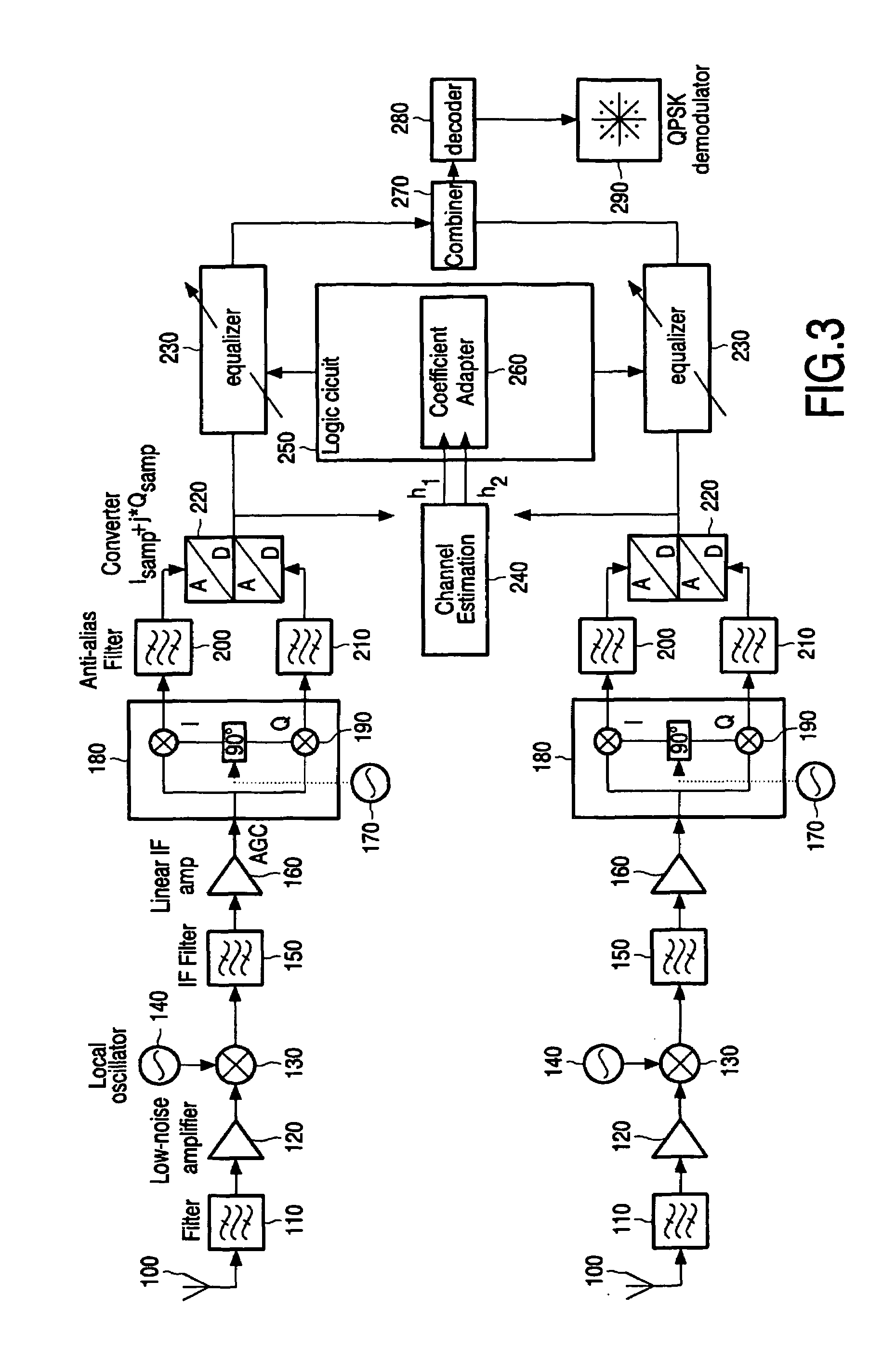Low complexity equalizer for radio receiver
a radio receiver and low complexity technology, applied in diversity/multi-antenna systems, pulse manipulation, pulse techniques, etc., can solve the problems of interference changing from destructive to constructive, interference can be reduced, and the frequency of the radio communication system is often affected by multi-path propagation effects, etc., to achieve better interference rejection, reduce the calculation load, and improve the effect of performan
- Summary
- Abstract
- Description
- Claims
- Application Information
AI Technical Summary
Benefits of technology
Problems solved by technology
Method used
Image
Examples
Embodiment Construction
[0035]FIG. 1. Embodiment of a Receiver Coupled to Network.
[0036]FIG. 1 shows an embodiment of a receiver 60 coupled by a wireless link to a base station 3 of a network or networks 90. One particular application is for receiving data related to communications services offered by an operator over the network, such as voice services or information services for example. The receiver in this example is incorporated in a mobile terminal 70, though in principle it could be applied in a base station. The mobile terminal includes a pair of antennas 1,2, spaced and coupled to benefit from spatially diverse reception. Channel signals from the antennas feed the equalizers. In principle, the channel signals can be fed from a single antenna and exploit other types of diversity such as time or polarization for example. There can be more than two antennas and / or more than two channels. Other parts of the mobile terminal such as user interface, data or voice processing functions and so on are repres...
PUM
 Login to View More
Login to View More Abstract
Description
Claims
Application Information
 Login to View More
Login to View More - R&D
- Intellectual Property
- Life Sciences
- Materials
- Tech Scout
- Unparalleled Data Quality
- Higher Quality Content
- 60% Fewer Hallucinations
Browse by: Latest US Patents, China's latest patents, Technical Efficacy Thesaurus, Application Domain, Technology Topic, Popular Technical Reports.
© 2025 PatSnap. All rights reserved.Legal|Privacy policy|Modern Slavery Act Transparency Statement|Sitemap|About US| Contact US: help@patsnap.com



